The Serengeti without a vehicle
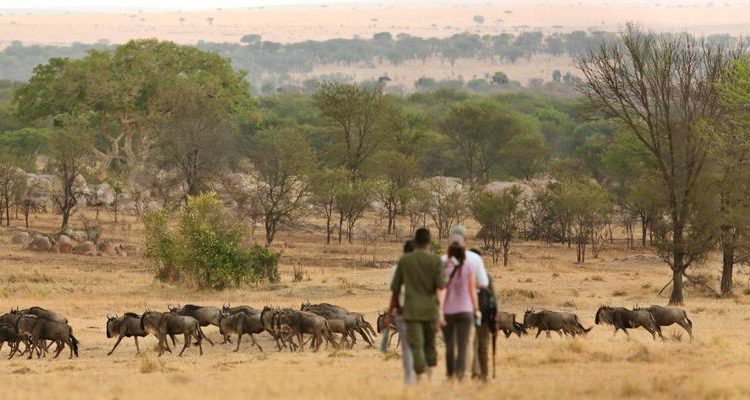
The Serengeti is one of the best known and most photographed wildlife habitats on Earth. Who (of us who are old enough) can forget Hugo Van Lawick’s fabulous documentaries made there in the 1960s and 70s or Alan Root’s incredible underwater crocodile footage and aerial cinematography of the wildebeest migration? It still grabs the imagination, with the massive herd of migrating wildebeest and zebra now a fixture in most wildlife enthusiasts’ minds.
Covering nearly 15,000 square kilometres or 6,000 square miles, it’s bigger than Wiltshire, Hampshire, Dorset and Somerset combined but with no A303, and more than 130 miles from north to south. Naturally, there are a few Stonehenge-like hotspots for visitors, in the central part around Seronera for one, but with so much space it’s perfectly possible to escape from other people, and it’s joyously easy to have a big tract of beautiful wilderness to oneself. Chat to us about how to do this, as a plethora of seasonal and permanent safari camps are vying for your attention. We’ve checked them all out, and visited every corner of this spectacular park as well as the adjacent private conservancies, and we’ve also enjoyed all of the activities on offer here.
Traditionally, the only permissible way to enjoy the Serengeti was from the relative comfort of a safari vehicle, but nowadays well qualified and very experienced guides can show their guests this ecosystem in many different ways. Here is a guide to the activities that can be enjoyed in the greater Serengeti:
Walking Safaris
This is possibly where mankind first stood up and became the formidable bipedal super-predator that the wildlife still fears. Walking across this eons-old land is a wonderful experience, and because the visibility is so often far-reaching it’s a very safe thing to do as well. Several camps offer short walking safaris, mostly those in the northern region of the park close to the Mara River, and those on private concessions or neighbouring private conservancies. With a wondrous variety of beautiful landscapes in which to walk, take your pick from properties as diverse as Lamai Serengeti, Klein’s Camp, Serian Serengeti North, Mila Tented Camp, Singita Faru Faru, and Namiri Plains.
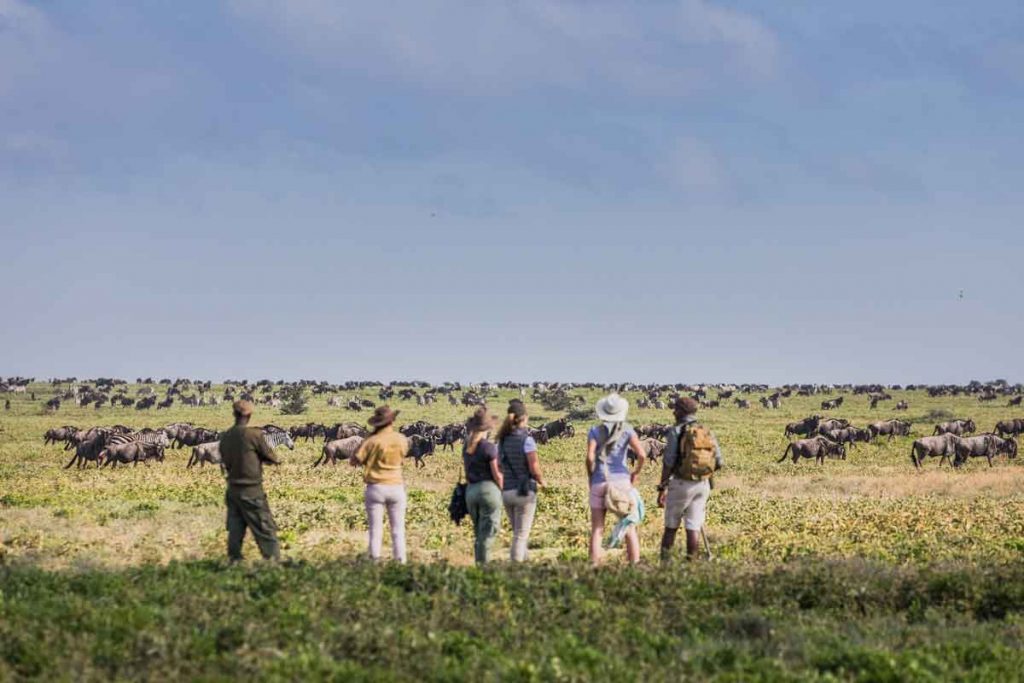
Fabulous walking safaris from Mila Tented Camp
If you’d rather do a ‘proper’ walking safari, spending between a day and two weeks on a walking expedition, we can tailor a safari to suit exactly what you would like. With a number of strategically located wilderness zones positioned across the park, which are solely accessible on foot, guests can enjoy primeval Africa at its absolute finest with plentiful wildlife and birds, beautiful vegetation and varied scenery completely detached from the modern mechanical world in blissful peace and quiet. Walking in the Serengeti is a sublime way to reconnect with our roots and to become immersed in life itself in all its incredible variety and intensity.
Meet the locals
The Masai are unsung heroes of conservation, traditionally nomadic herders who coexisted with the wildlife and considered herbivores to be ‘God’s cattle’ and therefore sacred. They are a disciplined and well-organised people and capable of fearsome deeds in battle; as they moved south into this region during the 17th and 18th centuries they displaced any farmers who had already occupied this land, and deterred others from settling here. This helped prevent the habitat loss and conflict with wildlife that results from farming, which has helped to maintain the population of wildlife across the vast expanse of Masai land in East Africa.
Meeting the Masai in authentic situations is a fascinating thing to do. They lead a very simple life, and have dwellings that are designed to be easily replaceable, if not completely transportable. Even though they are less nomadic than they once were, it’s still possible to witness life as it has been for many centuries, especially on the eastern margins of the Serengeti in the Ngorongoro Conservation area. Taking a walk for several days along the escarpment above Lake Eyasi is also a wonderful experience, and allows guests to develop an even better understanding of these dignified and self-reliant people, with several of them guiding and looking after the camp along with some donkeys to carry the baggage.
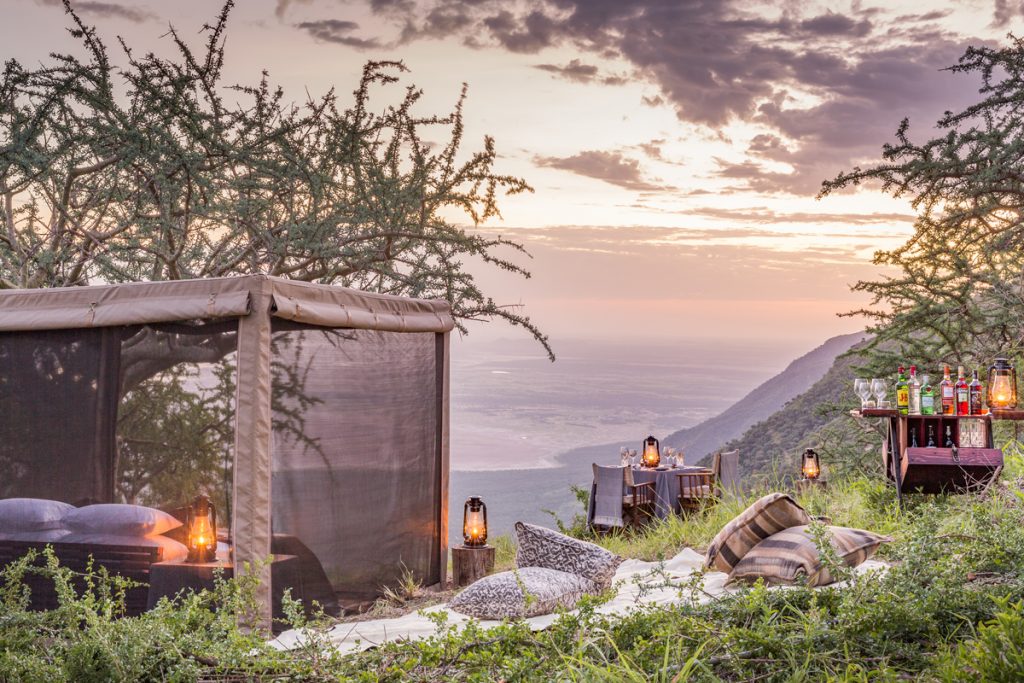
Exploring the Ngorongoro Conservation area from Mwiba Lodge
The Hadzabe are a unique tribe of hunter-gatherers, similar in stature and traditions to the Bushmen of southern Africa. They live very simple hand-to-mouth lives, taking only what they need from the bush each day, moving on regularly to avoid depleting resources, and leaving no trace or impact from their presence. The Hadzabe mostly live in the rugged and beautiful country along the escarpment between the Serengeti and Lake Eyasi, a land which offers plenty of resources for those who know it well. Honey, birds, animals, roots and fruit are plentiful here, providing the small numbers of people a hard-won but satisfactory diet. They are delightful and fascinating people to spend time with, and we can arrange this as part of a stay at Mwiba Lodge or Serian Serengeti South.
Star gazing
Being largely free of air and light pollution, the Serengeti offers phenomenal star gazing; the night sky seems to be alive with light from countless stars spread like a blanket across the colossal vault of space. It’s a wonderful place for learning about the constellations and the planets, either using a phone App or in the company of a knowledgeable guide. Several lodges have good telescopes as well, which greatly enhances the experience; looking at Saturn’s rings to the sound of a hyena whooping or a lion roaring is spine-tinglingly special. The level of detail a telescope gives is quite amazing, and it’s really worthwhile spending an hour or so using one on a moonless night. The moon itself is an amazing spectacle when seen through a telescope, and it’s great fun zooming in to different parts of it when there is enough of it in sight.
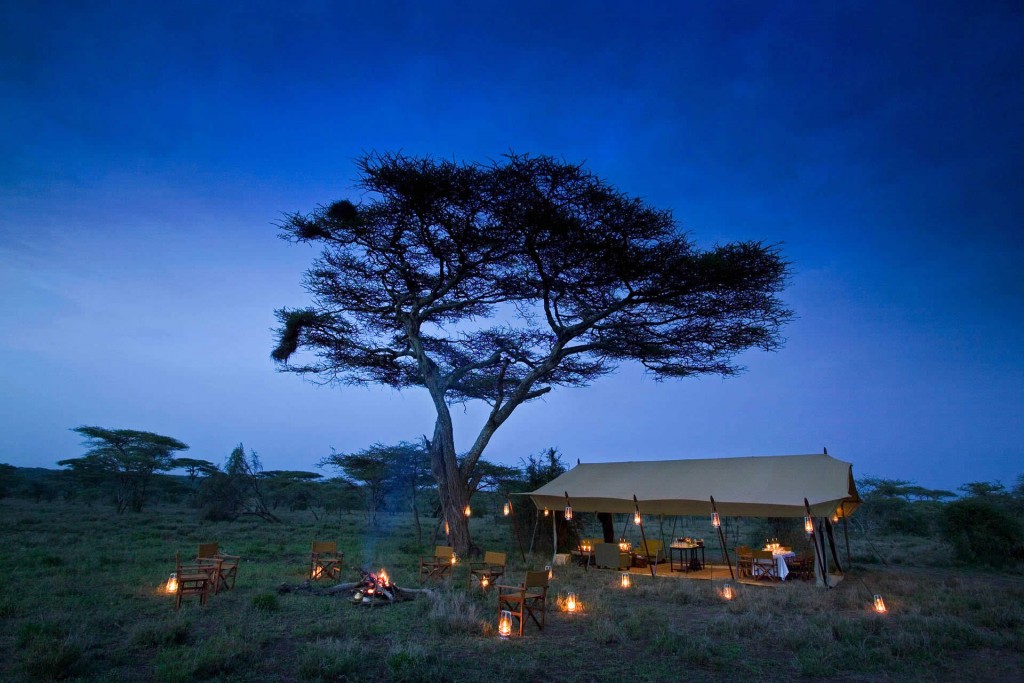
Early evening at Serengeti Under Canvas. The star gazing is phenominal as darkness draws in.
You can learn more about the vastness of space and check out the myriad of visible constellations through a telescope at camps such as Serengeti Under Canvas, Namiri Plains, Sabora and Sasakwa.
Balloon safaris
The huge size of the Serengeti and the relatively gentle landscape lends itself to fabulous ballooning opportunities. I know this because I was lucky enough to spend an hour aloft over the Serengeti a few years ago. It’s a place that I love dearly, and it brought a tear to my eye to see it from above in all its majesty, laid out below for so many miles in every direction, the definition of the gentle river valleys, the river courses, the layout of the kopjes, hills and plains, everything made better sense from above since it’s so hard to comprehend on the ground.
It’s utterly beautiful too, especially with the warm glowing light of the rising sun illuminating the canopies of the balloon, the tops of the hills, and then gradually the lower slopes and the plains. Tendrils of mist sometimes gather over the rivers in the cool of the morning, adding an ethereal quality to the scenery, and the wildlife can be seen limbering up for another day of survive and thrive, or die trying. After an hour or so propelled by the gentle morning breeze, the pilot selects a safe landing zone, and you’ll descend to earth for a fantastic breakfast in a grassy glade. As the renowned travel writer and Africa-phile Brian Jackman so eloquently put it – Flying in a balloon over the Serengeti; it’s like going to heaven in a picnic hamper!
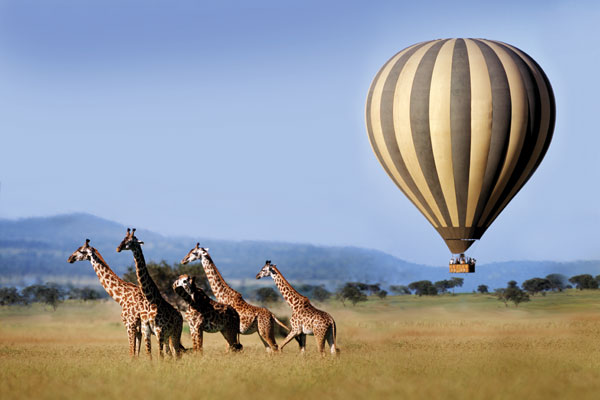
A balloon drifting over the Serengeti plains
Balloon flights can be arranged in many parts of the Serengeti, and the operators move them with the wildebeest migration to give guests the best views possible.
Horse riding
Even though the Serengeti has a huge number of big predators, it’s also a wonderful place for a riding safari; with excellent visibility, a generally temperate climate and good ground conditions for horses, it offers fast riding in plenty of places, and the chance to mingle with the wildlife on your horse. Kaskazi Horse Safaris operates an annual migration ride in the southern region of the Serengeti and the Ngorongoro Conservation Area, staying seven nights in the bush in a mobile tented camp. The ride is journey, a proper ‘safari’, and each day is different. The exact route depends on wildlife movements and can be adjusted at short notice to maximise sighitings, making it an exhilarating way to see the Serengeti and the greatest gathering of wildlife on the planet.
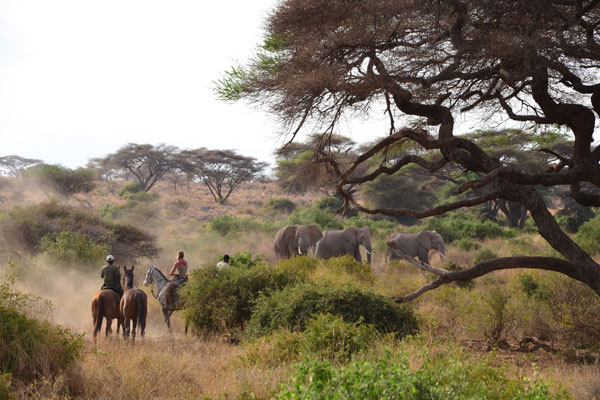
Riding across the Serengeti with Kaskazi Riding Safaris
Bird watching
There are cliffs where vultures breed, salt lakes that attract flamingos, rocky outcrops that often have fig trees clinging to them, dense forests along some of the rivers, vast swathes of acacia woodland and thousands of square miles of grassland. This matrix of habitats is perfect for a huge variety of birds, and many of them are readily seen. The variety is almost mind boggling with raptors, grassland birds such as ostrich, bustards and secretary birds, waders and marshland species such as herons, egrets and plovers, woodland birds such as cuckoos and hornbills, plenty of different weaver bird species, go-away birds, love birds, starlings, parrots, mouse birds, loads of pigeons and doves. The list seems endless, and the birds form a kaleidoscope of colours and shapes.
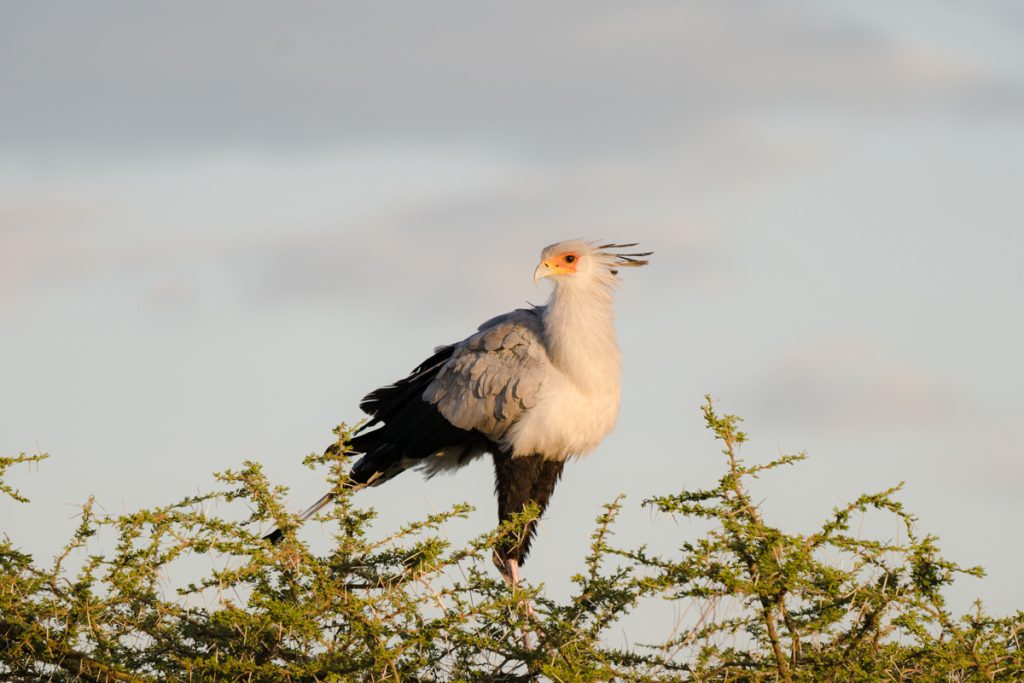
A secretary bird scanning the horizon from the treetops
Once the rains begin in November, plenty of migrants arrive from Europe as well as other parts of Africa, and swallows, honey buzzards, steppe eagles and white storks are among those that can be seen here. They will make good use of the abundance of food that flourishes once the rains arrive.
Community projects and visits
Communities on the western side of the Serengeti have been left rather isolated from the rest of Tanzania and most development opportunities thanks to their position between a very large national park and an even larger body of water, Lake Victoria. This land has long been settled and farmed, and because it receives a decent rainfall each year it supports plenty of people. With little in the way of education or incentives to do otherwise, poaching has been a big problem in the area for many years, and during a walk in the norther region last year we found a snare.
The Kuria people live in the far north of the Serengeti, to the west of the Kogatende area, and guests staying at Sayari, Ubuntu and Olakira Camp when the migration is in the north, can visit a Kuria village to learn a bit more about their rich traditions and culture. They might also be lucky enough to see a traditional dance or ceremony. The Nomad Trust partners with two community projects in this region, one of which offers a refuge for vulnerable girls, and the other is a school and clinic.
Grumeti Reserves cover more than 140,000 hectares of beautiful savannah and protects a key part of the migration route. Villages in this area have greatly benefitted from the far-sighted influence and ethos of Singita, who manage this glorious part of Tanzania. They have undertaken to work with their local communities, to educate, train, empower and employ as many of them as they can. Singita have established a cookery school and an Environmental Education Centre, set up scholarships for further education, developed intensive English language educational programmes to assist local people getting frontline jobs in the tourism sector and other businesses, and created a business incubator fund.
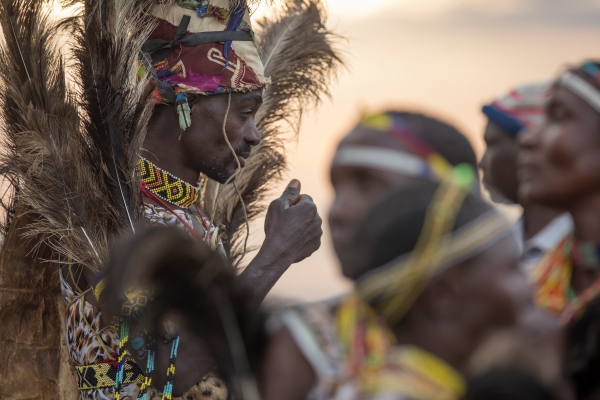
Singita has a strong relationship with the local people
Singita has trained 45 local farmers and entrepreneurs in how to produce livestock, vegetable, fruit and eggs to the standards needed by the lodges, and they undertake to buy as much produce as they can from these wonderful producers on their doorstep. All of this assistance has enabled Singita to get the community on their side in conservation work, and they have recruited numerous ex-poachers to work as anti-poaching scouts and rangers. It’s been such a success that black rhino have been reintroduced to Grumeti.
The local people take pride in the links with Grumeti Reserves and they now see the wildlife as being partly theirs, since it is of such value to them. Guests at Sasakwa, Faru Faru, Sabora and Serengeti House can visit some of these wonderful businesses and training centres and meet the anti-poaching team and their tracker dogs too.
At the southern tip of the Serengeti, Mwiba Lodge conserves 50,000 hectares of wild savannah before the land tips over the edge into the Rift Valley and down to Lake Eyasi in partnership with their local people. Four tribes live in this region, the Hadzabe, the Datoga who are herders a bit like the Masai, the agrarian Sukuma people, and the Masai. Makao village is just outside Mwiba Reserve, and can be visited by guests. Most of the people living there are Sukuma, with a few settled Datoga and Masai, and there is a reasonable amount of farming here.
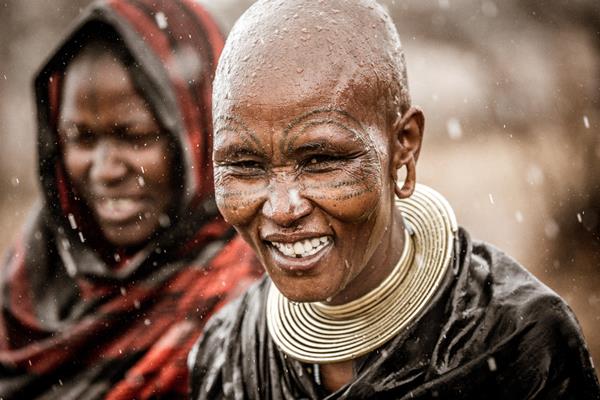
Datoga ladies close to Mwiba Lodge
Mwiba buys much of the fresh produce needed for the lodge from growers at Makao. The Datoga are semi nomadic herders who live mostly along the edge of the Lake Eyasi escarpment, along with the Masai. The Hadzabe are nomadic and come and go as they feel, bound to nowhere, but always on the move to find sustainable sources of food. If they are on the reserve, spending a few hours with them as they meander through this bountiful wilderness is a joyous experience filled with laughter, discussion, joking, and constant activity.
Anyone for tennis, a spot of croquet, or some archery?
Tanzania has for most of the year the perfect climate for playing tennis, with warm and dry weather almost every day. Singita, who know a thing or two about the finer things in life, have a tennis court at Sasakwa Lodge, perched high up on the hill and with epic views across the Serengeti plains. It would be wise not to get too distracted by the views or the birdlife in the trees around the court, as any ball that’s hit over the fence may fall a very long way down the hill….. Sasakwa also has a croquet set for indulging in a spot of visceral competition on the lawn, and archery can be arranged here too.
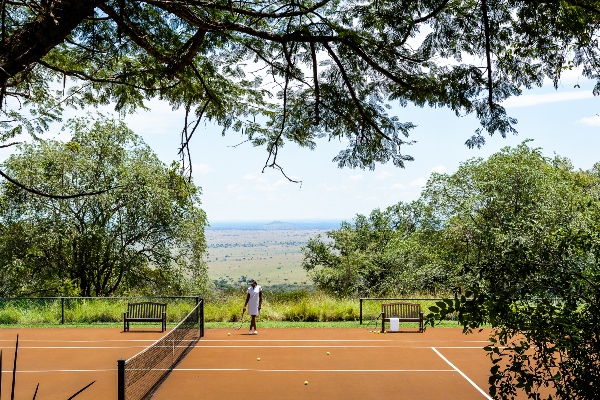
Tennis with a view at Singita Sasakwa Lodge
Craft beer and fine wines
Sayari Camp in the northern Serengeti is unique; it has a brand new solar powered micro-brewery on-site. Be among the first guests to sample Serengeti ‘home-brew’ in the magnificent surroundings of this luxurious and wonderfully well located camp.
Climate controlled wine cellars are a feature of many top of the range safari lodges in South Africa, and they have also migrated into Tanzania. Singita and Mwiba are among those lodges which have feature wine cellars and superb collections of wine to go with them. Guests can ask to have a tour of the cellars or even have dinner in air-conditioned comfort inside one of them.
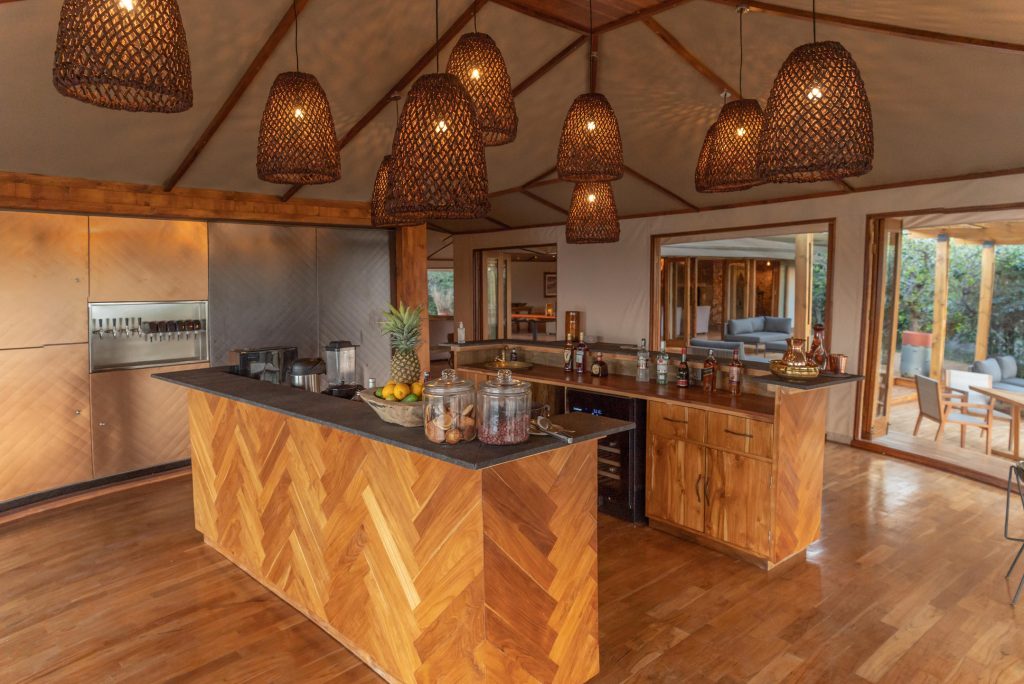
The bar and mirco brewery at Sayari Camp
Wildlife research
The scale and fecundity of the Serengeti make it a first class place for researching endangered wildlife and working out strategies for helping various species. Among them are cheetah, which number fewer than 20,000 in the wild now. The Serengeti is wonderful cheetah habitat, with plenty of open space enabling them to use their astonishing speed to good effect.
Kusini Camp and Namiri Plains Camp have resident cheetah researchers, and guests can spend some time with these very experienced scientists learning more about their work and hopefully contributing to it in a small way.
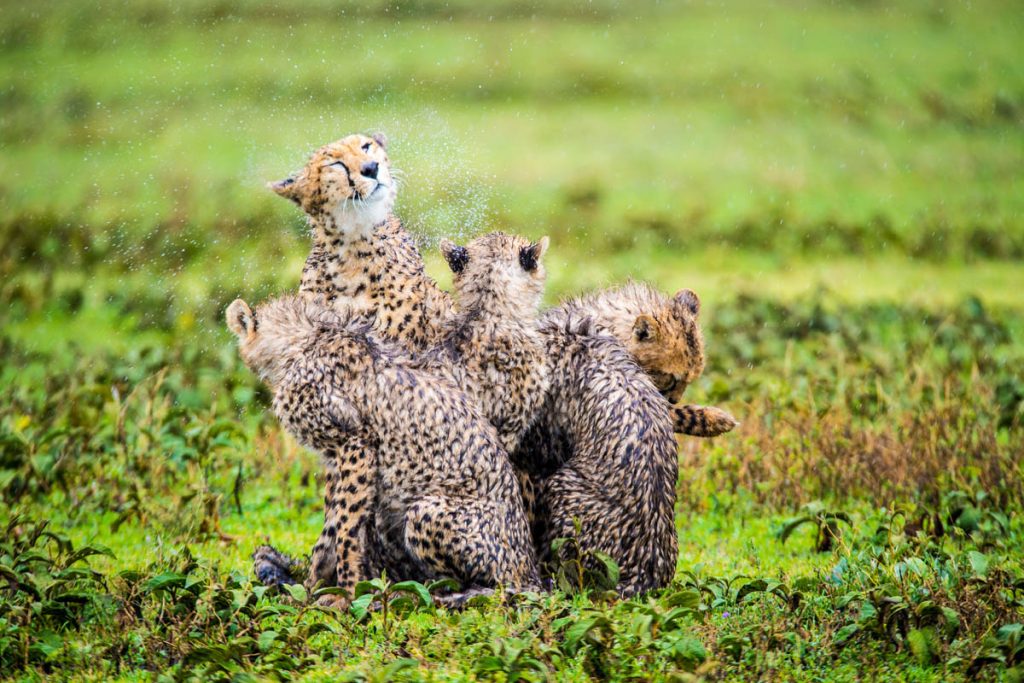
Cheetah close to Sanctuary Kusini Camp
Wellness
Visiting a spa is the last thing on most safari-goers’ minds, but plenty are delighted to find them provided in several of the more luxurious lodges, and happily make use of the lovely facilities. Having a bush massage is a very special experience. Mwiba Lodge, Faru Faru, Sabora and Sasakwa all have beautiful spas with varied treatments on offer.
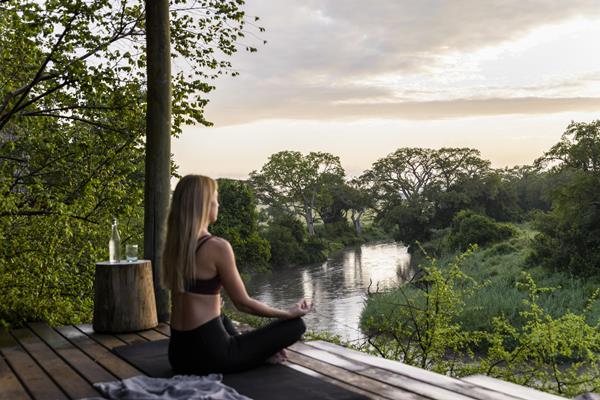
Enjoying the calm at Singita Faru Faru Lodge
What Next?
Let us know if you would like itinerary ideas to include any of the activites above and we’ll put something together for you. Give us a call, or drop us an email and we’ll respond as quickly as we can – usually on the same day. We very much look forward to talking to you.
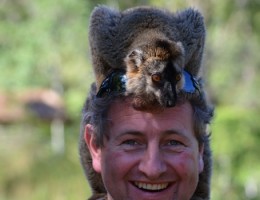
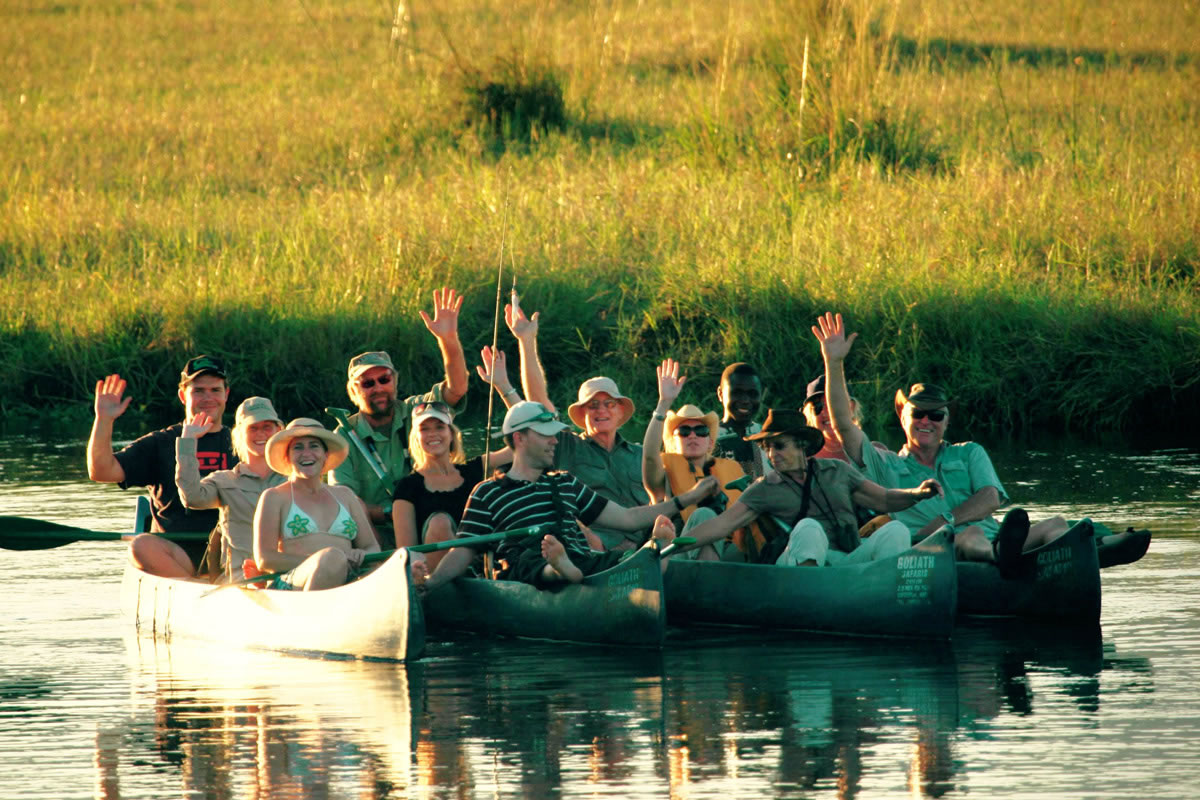
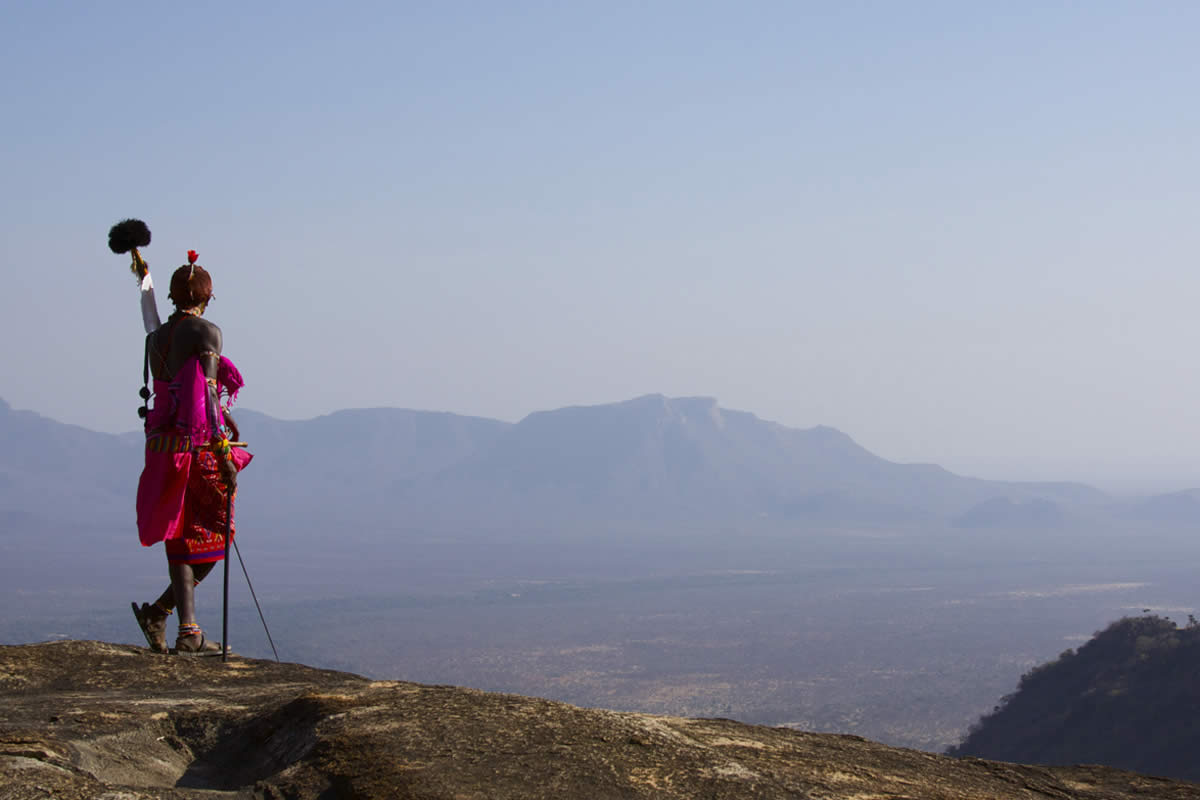
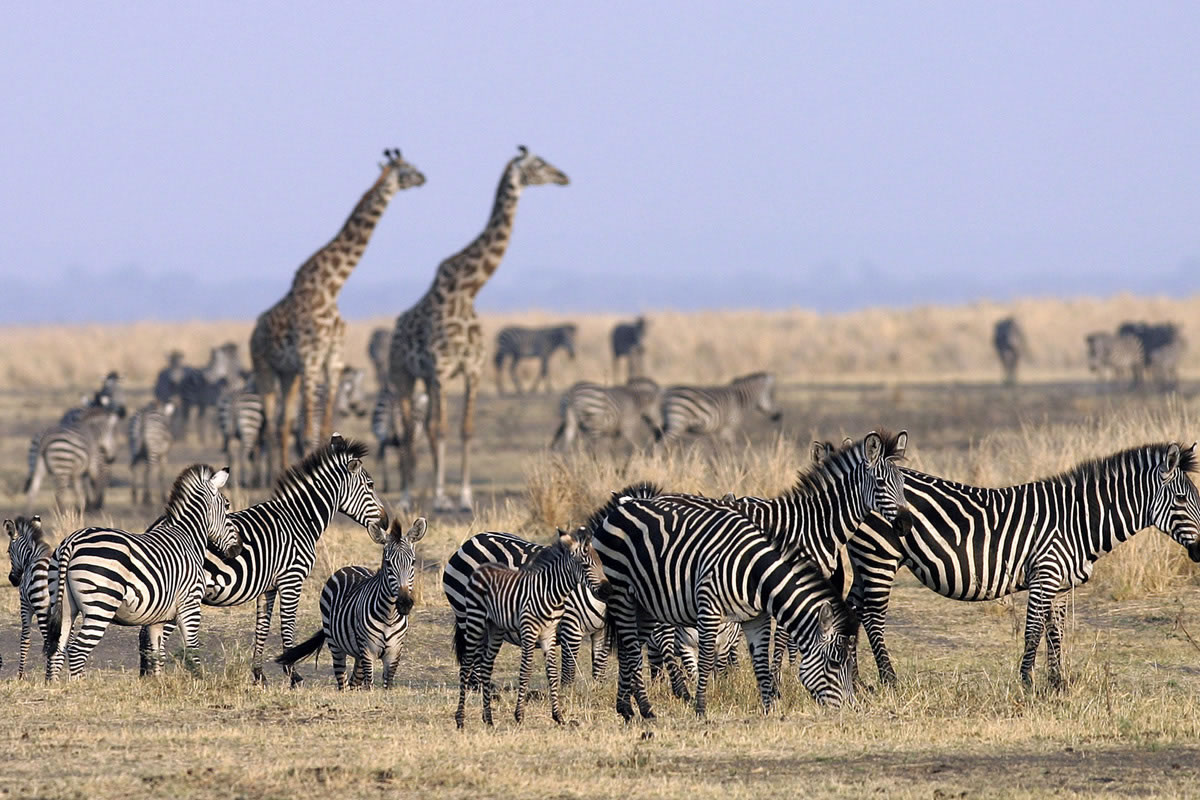

Leave a Reply